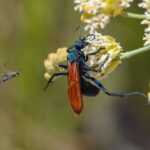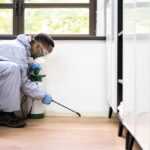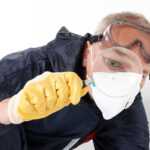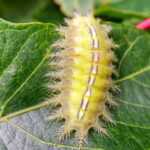Earwigs in House Environments: Effective Strategies for Dealing
Discover practical strategies to effectively manage earwigs in your home. Learn how to prevent infestations and keep your space pest-free. Read more!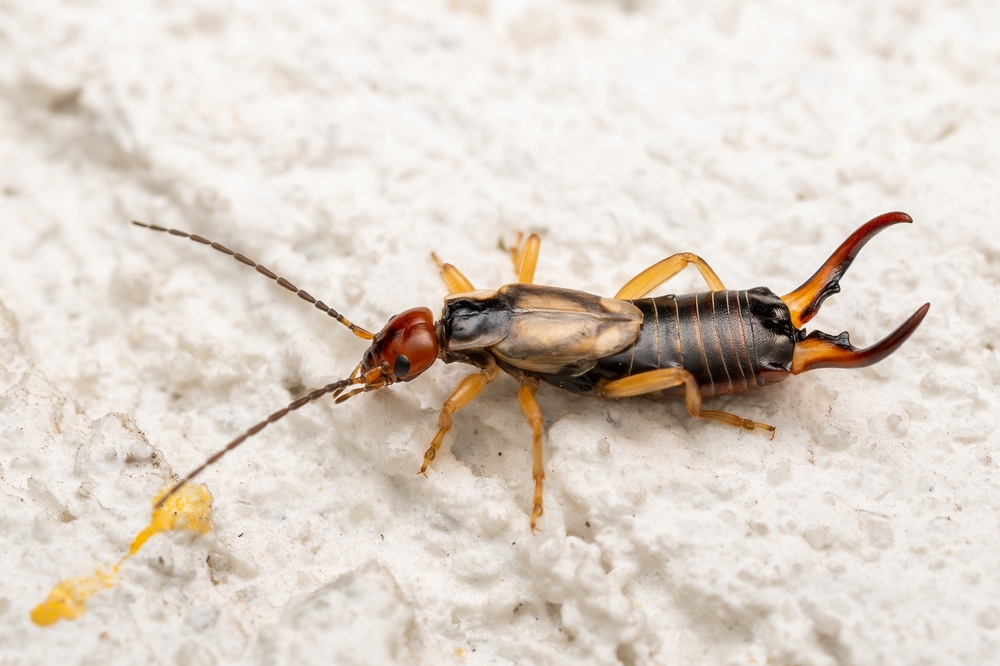
Effective Solutions for Earwigs in House | Home Pest Control Tips
Got earwigs in house and wondering why? This article explains why earwigs enter homes, how to spot them, and the best ways to get rid of them.
- Earwigs are identifiable by their elongated bodies and pincers, commonly found in damp areas of homes.
- Preventing earwig infestations involves sealing entry points, reducing moisture, and maintaining a clutter-free yard.
- Professional pest control services can effectively manage persistent earwig issues, offering tailored solutions and preventative measures.
Understanding Earwig Behavior
Earwigs are nocturnal insects, meaning they are most active at night and tend to hide during the day. They thrive in damp areas, such as under mulch, dead leaves, rotted wood, and around rain gutters, where moisture and organic matter are abundant. These environments provide the perfect conditions for earwigs to feed and reproduce, as they are attracted to decaying plant material and other organic debris. Earwigs also feed on live plants, including ornamental plants, which can make them a nuisance in gardens and landscaped areas.
One of the most recognizable features of the earwig is its prominent pincers, located at the end of its abdomen. While these pincers may look intimidating, they are primarily used for defense and capturing prey, and do not pose significant harm to humans. Earwigs are not known to cause serious injury, but their presence can be unsettling, especially when they gather in large numbers.
Earwigs lay eggs in moist conditions, often in hidden spots where dampness persists. If left unchecked, their populations can grow rapidly, leading to more earwigs inside and around your home. Understanding these behaviors is essential for effective pest management, as it helps homeowners identify the conditions that attract earwigs and take steps to prevent infestations. By recognizing where earwigs thrive and what they feed on, you can better protect your home and garden from these persistent pests.
Identifying Earwigs Inside Your Home
Earwigs are easily distinguishable by their elongated bodies, which can range from 0.5 to 2 inches in length. Their coloration varies from brown to reddish-brown, and they often have a dark brown body with a reddish head, which are key identification features. They are notable for their slender forms adorned with prominent pincers at the rear. These pincers, although intimidating, are primarily used for defense and not for biting humans.
Earwigs often inhabit areas such as window sills, door thresholds, and various crevices within your home. These spots offer the dark, damp environments that earwigs favor. Small insects with pale yellow-brown legs scuttling in these areas are likely earwigs.
Earwigs are set apart by their pincers and elongated bodies, making them look more menacing than they are. Identifying these features helps in recognizing an earwig infestation, allowing you to address it appropriately.
Why Earwigs Enter Homes
In search of damp areas, earwigs often venture indoors. They are commonly found in basements, bathrooms, and under sinks where moisture accumulates, especially during dry seasons. Prolonged dry weather can drive earwigs to seek shelter indoors as they look for moisture and cooler conditions.
Earwigs are attracted to food sources like decaying plant matter and other organic materials. Ample food and moisture in your home make it an inviting habitat. Extreme weather conditions, whether hot or rainy, can also drive them indoors seeking shelter. For more information, you can check out earwig faqs.
Earwigs usually enter houses through small cracks, poorly sealed doors, and crevices in the foundation. Sealing these entry points in houses can significantly reduce the likelihood of an infestation. Understanding their reasons for entering helps in taking proactive measures to prevent their intrusion.
Preventing Earwig Infestations
Preventing earwig infestations starts with eliminating their entry points. Sealing cracks and crevices with caulk is highly effective. Fixing leaks and ensuring proper drainage around your home will also reduce the moisture levels that attract earwigs. It is important to eliminate moisture in and around your home to deter earwigs from entering and thriving indoors.
Outdoor maintenance is key to keeping earwigs at bay. Removing piles of wood, leaves, and other debris can prevent earwigs from nesting close to your house. Trimming back plants and shrubs that touch the house reduces access points for these pests. Keep the area around your home’s foundation clear of debris and well-maintained to reduce hiding spots. A clutter-free yard is less inviting to earwigs and other insects.
Additional preventive measures can further reduce the risk of infestation. Using yellow bug lights outside can decrease their attraction to your home. Sanitation practices, such as removing clutter and trimming overgrowth, significantly reduce hiding spots and populations. Consistent maintenance prevents earwigs from finding a hospitable environment in or around your home.
In summary, seal entry points, eliminate moisture, and maintain a clean yard as crucial steps in preventing earwig infestations. Sealing cracks and eliminating moisture around the house foundation are key to stopping earwigs from entering your home. These proactive measures create an environment less appealing to earwigs, keeping them outside where they belong.
Effective Methods to Deal with Earwigs
To tackle an existing earwig infestation, several effective methods can reduce their numbers. Traps designed for earwigs are a practical solution and are typically placed in frequently spotted areas like basements and bathrooms. Insecticides can also be applied to manage and control the population.
For persistent earwig issues, professional pest control services are often the best option. Experts provide comprehensive solutions tailored to your specific situation. For example, Responsible Pest & Scorpion Control offers consultations to assess the severity of earwig problems and develop customized treatment plans in the Greater Metro Phoenix area, including Mesa and Tucson, AZ.
Professional pest control services emphasize eco-friendly and safe treatment options to protect homes and families. These services include preventative measures and ongoing monitoring to ensure earwigs do not return. Opting for professional help ensures a thorough and lasting resolution to earwig problems.
Ongoing monitoring and preventive measures are crucial to keeping earwigs at bay. After professional treatment, maintaining a clean and dry environment and regularly checking for entry points can help prevent future infestations. Combining professional services with consistent maintenance effectively deals with earwigs in your home.
Are Earwigs Harmful?
Earwigs are generally not dangerous to humans or pets and are not known to earwigs bite unless provoked. Despite their menacing appearance and the myth that they crawl into human ears, earwigs do not nest in ear canals. Their pincers are primarily used for defense and are unlikely to cause significant harm.
While earwigs can be a nuisance, they do not pose a significant threat to health or safety. Their presence in homes is more of an annoyance than a danger. Knowing earwigs are not harmful can alleviate undue fear and allow focus on effective prevention and control.
Managing Future Earwig Infestations
Preventing future earwig infestations requires a proactive approach focused on eliminating moisture and sealing entry points around your home’s exterior. Start by fixing leaky pipes and addressing any water leaks that create damp areas where earwigs can thrive. Sealing small cracks and crevices in your home’s foundation, as well as installing weather stripping around doors and windows, will help block common entry points that earwigs use to get inside.
Keeping the area around your home clear of debris, such as dead leaves, wood chips, and other organic matter, is also crucial. These materials provide both food sources and shelter for earwigs, making your home more attractive to them. Regularly inspect your home’s exterior and interior for signs of earwigs, such as a noticeable foul odor or the presence of these pests in damp areas. Early detection can help you address a potential infestation before it becomes a major nuisance.
If you continue to find earwigs despite your efforts, consider using insecticides or contacting a pest control professional for targeted treatment. Persistent problems may require expert intervention to fully eliminate the infestation. It’s also helpful to consult earwig FAQs to better understand their habits, whether earwigs bite, and how they differ from other insects like ants, cockroaches, and beetles. While these other pests can also invade homes, earwigs are unique in their preference for moist conditions and their tendency to feed on decaying plant material.
By eliminating moisture, sealing entry points, and maintaining a clean, debris-free environment, you can prevent earwigs from becoming a recurring problem. Taking these steps not only helps keep your home earwig-free but also reduces the risk of infestations from other insects, ensuring a healthier and more comfortable living space.
Expert Help for Persistent Earwig Problems
For persistent earwig problems, seeking professional help is advisable. Responsible Pest & Scorpion Control offers targeted pest management services for earwig infestations. Known for excellent service and knowledgeable staff, they have earned a 5-star reputation from satisfied customers.
Many clients, including long-term users of over ten years, highly recommend Responsible Pest & Scorpion Control. They offer comprehensive solutions, including preventative measures and ongoing monitoring, ensuring earwig problems are resolved effectively and sustainably.
If your earwig problem persists, professional pest management can provide long-term solutions.
Earwigs are nocturnal insects that often find their way into homes in search of moisture and food. Identifying them correctly is the first step in managing an infestation. Preventive measures, such as sealing entry points and reducing moisture, are crucial in keeping these pests at bay. For those facing persistent issues, professional pest control services can offer effective and lasting solutions.
By understanding the nature of earwigs and implementing the preventive and control methods discussed, you can maintain a pest-free home. Take action today to prevent earwig infestations and ensure a comfortable living environment for you and your family.
Frequently Asked Questions
What areas does Responsible Pest & Scorpion Control serve?
Responsible Pest & Scorpion Control serves the Greater Metro Phoenix area, including Mesa and Tucson, Arizona.
What type of pest control services does Responsible Pest & Scorpion Control offer for homes?
Responsible Pest & Scorpion Control offers residential pest control services to effectively manage and eliminate pests in homes. This ensures a safe and comfortable living environment for residents.
What guarantee does Responsible Pest & Scorpion Control provide for their services?
Responsible Pest & Scorpion Control guarantees effective pest and scorpion control services at affordable prices. This assurance ensures clients receive quality service without financial strain.
What is the customer feedback regarding Responsible Pest & Scorpion Control?
Customers consistently regard Responsible Pest & Scorpion Control as a 5-star company, praising its excellent service and the expertise of its staff.
How long have the parents of one customer been using Responsible Pest & Scorpion Control?
The parents of one customer have been utilizing Responsible Pest & Scorpion Control’s services for over ten years.
